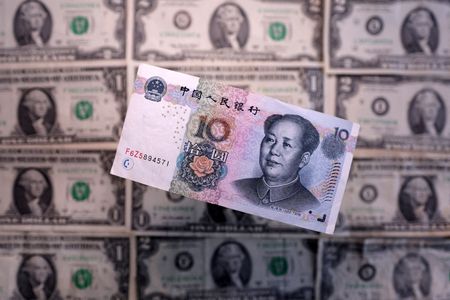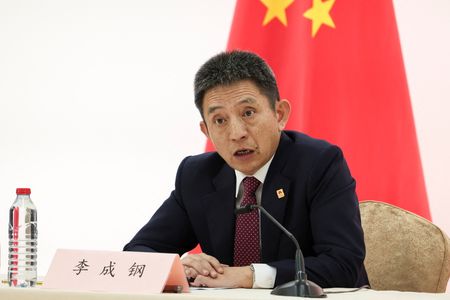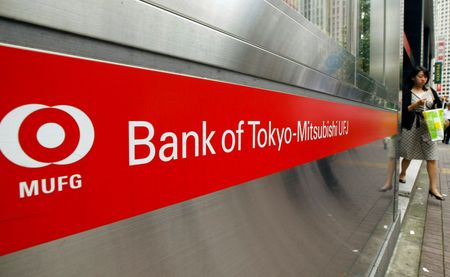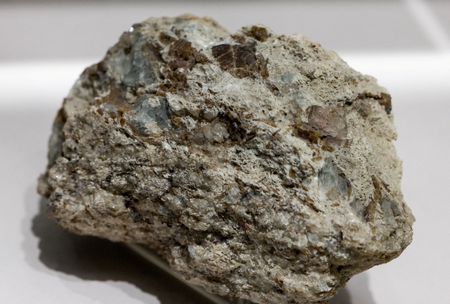SHANGHAI (Reuters) -China’s yuan finished the domestic trading session at a six-month high against the dollar on Tuesday, underpinned by an unwinding of carry trades and a broader rush out of U.S. assets and back into Asia.
The onshore yuan ended the domestic session at 7.2169 per dollar, the strongest such close since November 11, 2024 and up 0.76% on the day.
The surge in the yuan comes alongside broad rallies in currencies of Hong Kong, Taiwan and South Korea as investors rush out of dollars and into home currencies. Hopes of a trade deal between the world’s two largest economies have also lent support.
The offshore yuan, which remained open during the Labour Day holiday period, surged past the psychologically important 7.2 per dollar mark a day earlier to a level last seen in November. It last traded at 7.2160 as of 0900 GMT.
Meanwhile, Chinese major state-owned banks were seen busy buying U.S. dollars and selling yuan in the onshore spot market, two people with knowledge of the matter said, in an apparent attempt to slow the pace of yuan rises.
Analysts said the popular trading strategy of borrowing the yuan, the Taiwan dollar and other low-yielding currencies to fund higher yielding dollar assets was no longer profitable following recent dollar slides.
“As the strong dollar story reverses, more Chinese exporters may convert their foreign exchange receipts and deposits to the yuan in coming months,” said Gary Ng, senior economist at Natixis.
“The weaker dollar can provide a window of opportunity for the People’s Bank of China (PBOC) to act more in monetary policy as the pressure on capital outflows will be less severe.”
The yuan surge comes after U.S. President Donald Trump said on Sunday the United States was meeting with many countries, including China, to discuss trade deals, and his main priority with Beijing was to secure a fair trade deal.
Beijing had earlier on Friday said it was “evaluating” an offer from Washington to hold talks over Trump’s tariffs, although it warned the United States not to engage in “extortion and coercion.”
“Hopes of a U.S.-China dialogue and signs of progress on possible trade deals have reinforced the de-escalation thematic,” said Christopher Wong, FX strategist at OCBC Bank.
Prior to the market opening, the People’s Bank of China (PBOC) set the midpoint rate, around which the yuan is allowed to trade in a 2% band, at 7.2008 per dollar, its strongest since April 7 but only 6 pips firmer than the previous setting.
“Today’s fixing showed that the PBOC is reluctant to see strong appreciation of the yuan,” said Becky Liu, head of China macro strategy at Standard Chartered.
Liu said the yuan’s regional underperformance is expected to continue, noting possible frontloading of foreign exchange demand by overseas listed Chinese companies for their dividend payments and uncertainty around Sino-U.S. trade relations.
Khoon Goh, head of Asia research at ANZ, echoed the view and said “with the PBOC making it clear that the fix is going to be anchored above 7.20 and dampening expectations of yuan strength, this should stem the recent appreciation seen in other Asian currencies.”
(Reporting by Shanghai NewsroomEditing by Shri Navaratnam, Sam Holmes and Kim Coghill)











